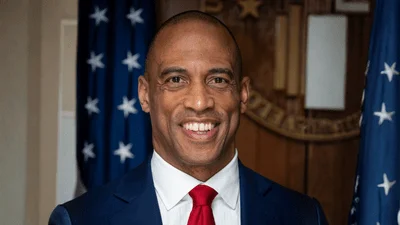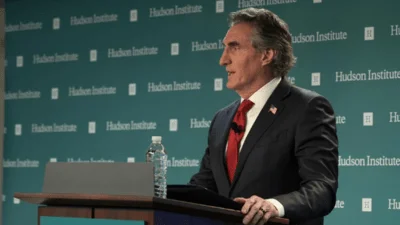The Congressional Record is a unique source of public documentation. It started in 1873, documenting nearly all the major and minor policies being discussed and debated.
“HUMAN GENOMES” mentioning the U.S. Dept. of Energy was published in the Senate section on pages S5776 on June 26, 2000.
The publication is reproduced in full below:
HUMAN GENOMES
Mr. DOMENICI. Madam President, isn't it interesting. I came to the floor today to discuss a completely different subject. I want to do so briefly. It is very difficult to do this because, frankly, there is a great story about it in the United States today.
The National Institutes of Health announced that they have just about mapped the human genome, which means in the future, at a minimum, every known dreaded disease of mankind will be located in our chromosome system by the mapping of the human genome. Where scientists used to take 25 years and devote an entire science department to try to locate where multiple sclerosis came from within the human body, in short order all of those dreaded diseases will be defined in reference to the genetics of the human body, and mutations of that will be discovered as the reason for the diseases. What an exciting thing.
I have not been part of the ceremony, but I started the genome program in Congress. I am very thrilled to find that it has resulted in what we predicted in 1996 and 1997.
I want to tell the Senate a rather interesting story of how the genome got into the National Institutes of Health and how today it is still one-third in the Department of Energy.
A very good scientist who worked for the National Institutes of Health named Dr. Charles DeLisi had been urging the National Institutes of Health to get started with a genome program. He had described its greatness in terms of it being the most significant wellness program mankind had ever seen--wellness. They defied his request and would not proceed. He said: I quit.
He meandered over to the Department of Energy, which had done a lot of research on genetics because they were charged with discerning the effect of radiation from the two atomic bombs that had been dropped on Japan. He joined their department.
He came to see the Senator from New Mexico, who worked for the laboratories hard and long, and said: Why don't we start a genome program in the Department of Energy since the National Institutes will not do it?
I am trying to recap for my future by writing it, and I am putting it together.
But what actually happened was I proposed that the genome program start, and that it start in the Department of Energy.
Guess what happened. The National Institutes of Health heard about it. All of their reluctance disappeared because somebody was about to give the genome project to the Department of Energy. What an easy patsy they became.
They came to the office. Then we went to see Lawton Chiles, the Senator from Florida, who appropriated the science part of this budget. They said: Let's do it together--a little bit for DOE, and a whole lot for NIH. I said: Whatever it takes, let's do it.
Within the next year--1997--we funded the first genome money without a Presidential request. It had come forth, I think, in the Labor-Health and Human Services bill that will be before us today at somewhere around $20 million, maybe $29 million.
We funded it for another year. Finally, the President of the United States funded it in his budget in the third year of its existence. Ever since then, it has been funded in a President's budget and by us. It is up around $129 million or $130 million. I think it is something like that. But they predicted that within 15 years they would map the entire chromosome structure of the human being. Today, they made an announcement. I don't think they are really totally finished. But there is competition afield as to how to use it, and the private sector group is purportedly moving more rapidly.
The NIH and another group of scientists announced at the White House to the American people and the world we have essentially mapped the chromosome system of a human being. We now know the site, the location, the map is there, for discerning what the genes contain with reference to human behavior and human illness.
I predict, as I did at least five times before committees of the Senate from the years 1987 to about 1994, where I appeared more often than any other committee urging we fund the genome project, we are ready today to say the map is there; let's get with it and start using it. We will have breakthroughs of enormous proportions with reference to humankind's illnesses.
I am neither scientific enough nor philosophical enough to know what else it will bring. When we do something of this nature, we bring other questions. There will be problems of abuse, of genetic mapping to decipher people in a society prone to cancer and who therefore will not be hired, unethical research using mutations in ways not good for humankind.
Incidentally, we were aware of that problem from the beginning. Senator Mark Hatfield said: Let's set aside 5 percent--that is my recollection--of the funding to use for education and ethical purposes to try to make sure we are on track. I have not followed that well enough. I am not exactly sure how that is going. We still have some legislating to do in the area regarding uses in research, and legislating with reference to an insurance company taking a whole group of people and saying: We are not insuring you because we know something about your genetics.
Those are serious problems. They are bigger than the problem itself. They could make America angry at this program. We don't want to do that. We want the American people happy that we have put this into the hands of human beings, for wellness purposes. That is our desire, so that people not get dread diseases, or we find out how to cure them when they get them. Genome mapping ought to be heralded as something we did right. I don't know where it goes.
I close today by thanking Dr. Charles DeLisi for bringing this idea from the NIH to my office. Senator Lawton Chiles, now deceased, is the one to whom NIH ran, saying, let's get something going. He and I worked on these projects well together. We got it going in an appropriations bill. I thank him, and I thank many Senators who worked on this, principally in the committee, whose legislation is pending. That is the subcommittee that did most of the work and helped it along, more than any other group in the Congress.
I am delighted to have a chance to speak today.
The PRESIDING OFFICER. The Senator from Alabama.
Mr. SESSIONS. Madam President, I love to hear the story Senator Domenici tells about helping to make this human genome project a reality. He shared it with me some time ago. It is one of those success stories we can feel good about. It does provide opportunities for health improvement in America in an extraordinary way.
We heard recently remarks by the head of the National Cancer Institute who described one form of leukemia that had been diagnosed, and that certain types of treatments cured 60 percent of the leukemias and 40 percent were not cured; they didn't know why. But after the human genome study, they found out there were actually two different kinds of leukemias, and the treatment served one and not another.
A lot of good breakthroughs are on the horizon, I am convinced.
____________________








